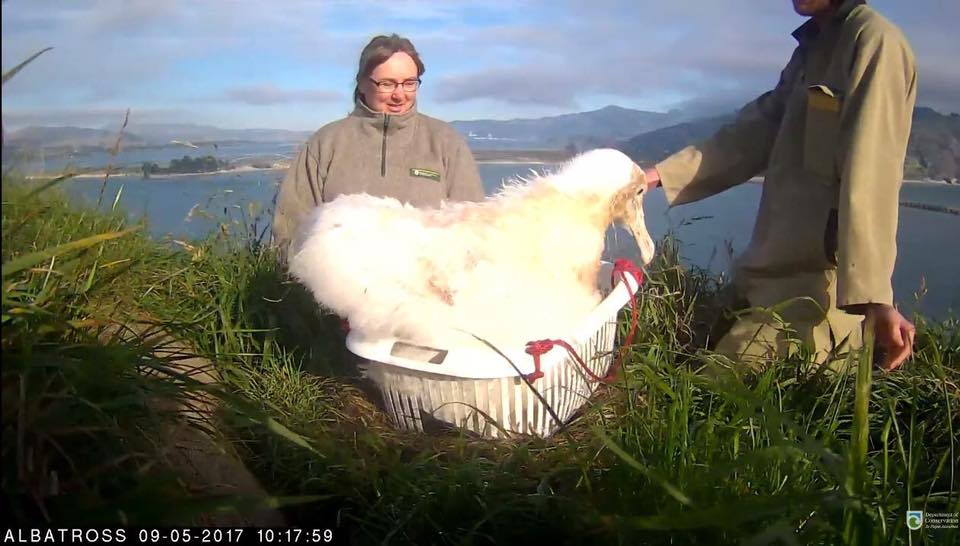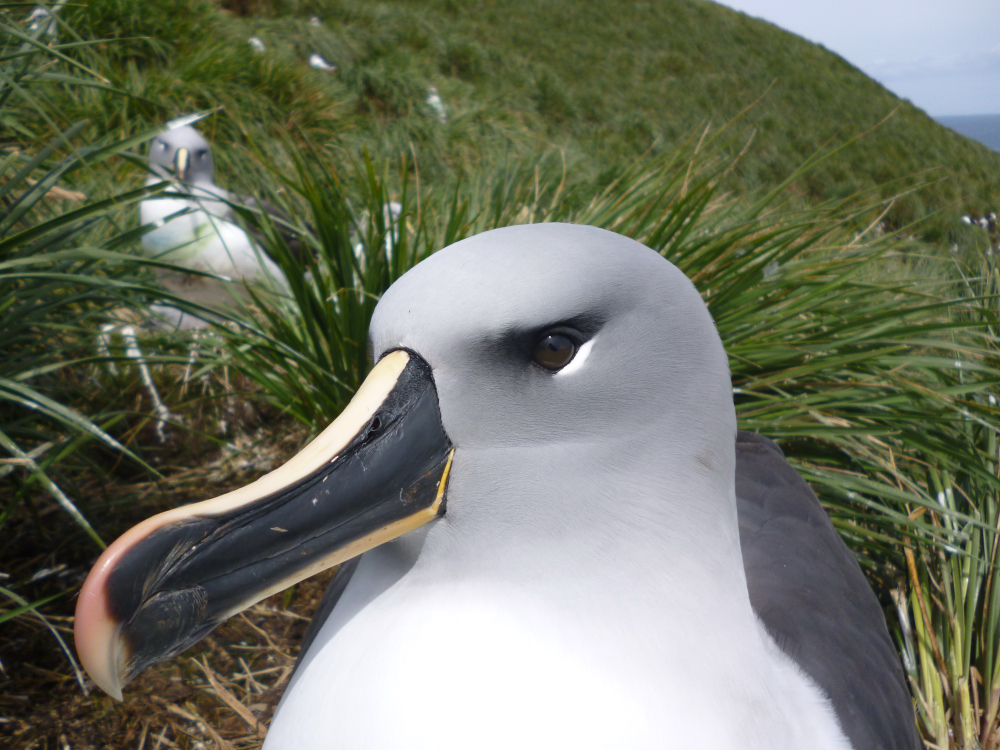
Antipodean Albatross pair on Antipodes Island, photograph by Erica Sommer
Yvan Richards (Dragonfly Data Science) has produced a report for the Conservation Services Programme of the Department of Conservation on population modeling of the nominate subspecies of the New Zealand endemic Antipodean Albatross Diomedea antipodensis (globally Endangered) that breeds on Antipodes Island. Annual survival rate and breeding success both decreased over the period 1984 to 2004.
Antipodean albatross Diomedea antipodensis antipodensis are endemic to New Zealand, with the quasi-totality of the population nesting on Antipodes Island. The species is classified as Nationally Critical due to a potential demographic decline. Threats to the population include incidental mortality in fisheries (in New Zealand and in international waters) and climate change.
The objective of this project was to provide a tool that allows stakeholders to explore the potential impact of threats and the demographic outcomes of management strategies. Using the tool, simulations of the demographic impact of different scenarios may be carried out so that management strategies can be assessed and prioritised.
A small subset of the population of Antipodean albatross has been studied since 1994, and these field data were used to perform the simulations. A Bayesian integrated population model was developed to estimate the main demographic parameters of the population. The model considered detectability of individuals, inter-annual variability, and movements in and out of the study area; it was fitted using the software Stan.
From the model, the annual survival rate for females was estimated to decline from 0.947 (95% c.i.: 0.914 – 0.974) in the period from 1994 to 2004, to 0.882 (95% c.i.: 0.814 – 0.94) after 2005. Estimated survival for males was higher, at 0.946 (95% c.i.: 0.913 – 0.972) and 0.927 (95% c.i.: 0.887 – 0.961) for the two periods. Breeding success also declined between the two periods, from 72.4% (95% c.i.: 65.8% – 78.6%) from 1994 to 2004 to 63.7% (95% c.i.: 53.4% – 73%) subsequently.
Under the current scenario, simulations suggest a significant decline of the population, with an annual growth rate of -4.84% (95% c.i.: -6.07% – -3.65%). Limitations in the data and in the model assumptions may cause the decline to be slightly overestimated; however, the trend remains of concerns.
The simulation tool is aimed to assist conservation managers with the prioritisation of management strategies to mitigate threats to the Antipodean albatross population and to guarantee the persistence of this species.:”
Reference:
Richard, Y. 2021. Integrated Population Model of Antipodean Albatross for simulating Management Scenarios. Technical Report prepared for Department of Conservation – June 2021. Wellington: Dragonfly Data Science. 31 pp.
John Cooper, ACAP Information Officer, 19 July 2021

 English
English  Français
Français  Español
Español 


